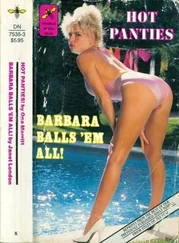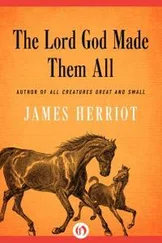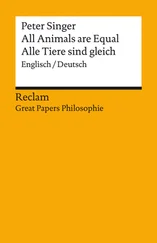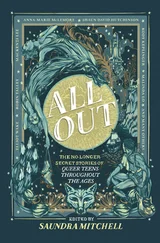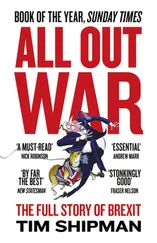Another study, from the University of Michigan School of Business, found that "firms with political connections" were much more likely to get TARP funds than firms that were not well connected. The study looked at how much money firms contributed to election campaigns, through PAC contributions and donations by executives, as well as how much companies spent on lobbyists. Ironically, the study found that those politically connected firms actually underperformed unconnected firms despite the infusion of federal funds. In other words, poorly run, well-connected firms got the loot. 11
The fact that politically connected banks got good deals from the Treasury was not lost on the banking industry. Robert Wilmers, the chairman and CEO of M&T Bank, said at the time, "The pattern is clear, the bailout money and the perks are concentrated among the big banks, the ones who pay the lobbyists and make the campaign contributions, while the healthy banks pay the freight." 12
Buffett needed the TARP bailout more than most. In all, Berkshire Hathaway firms received $95 billion in bailout cash from the Troubled Asset Relief Program. Berkshire held stock in Wells Fargo, Bank of America, American Express, and Goldman Sachs, which received not only TARP money but also $130 billion in FDIC backing for their debt. All told, TARP-assisted companies constituted a whopping 30% of his entire publicly disclosed stock portfolio. As one investigation by the Houston Chronicle put it, Buffett was "one of the top beneficiaries of the banking bailout." 13
Buffet demanded better terms for his Goldman investment than the government received for its bailout. His dividend was set at 10%, the government's was set at 5%. Had the bailout not gone through, and had Goldman not been given such generous terms under TARP, things would have been very different for Buffett. As it stood, the arrangement with Goldman earned Berkshire about $500 million a year in dividends. "We love the investment!" he exclaimed later to Berkshire investors. His stake in General Electric was also profitable. As Rolfe Winkler of Reuters bluntly put it, "Were it not for government bailouts, for which Buffett lobbied hard, many of his company's stock holdings would have been wiped out." 14
By April 2009, share prices for Goldman had more than doubled. 15By July 2009, it was reported that Buffett had already yielded a return of $2.5 billion for his investment.
Later, astonishingly, Buffett would publicly complain about the bailouts in his annual letter to Berkshire investors, claiming that government subsidies put Berkshire at a disadvantage. As he put it, funders "who are using imaginative methods (or lobbying skills) to come under the government's umbrella—have money costs that are minimal," whereas "highly-rated companies, such as Berkshire, are experiencing borrowing costs that ... are at record levels." Berkshire, of course, is simply a holding company representing a long list of investment assets—including investments in eight banks that were helped by the FDIC's Temporary Liquidity Guarantee Program. As Winkler later put it, "It takes chutzpah to lobby for bailouts, make trades seeking to profit from them, and then complain that those doing so put you at a disadvantage."
One financial observer, Graham Summers of Phoenix Capital Research, claimed that what Buffett did was "a serious conflict of interest AND seriously bordering on insider trading." 16But what Buffett did was entirely legal. It was an exercise in crony capitalism and manipulation, but he broke no law. He simply used his political connections to secure huge profits with taxpayer money.
There are two questions to ask about this legal behavior. First, how can so many people listen to Warren Buffett's policy advice without considering how self-interested it might be? Second, and more important, how are our politics warped by deep-pocketed, heavily invested advisers?
After the bailout bill passed, Warren Buffett sat down and wrote Treasury Secretary Henry Paulson a four-page private letter proposing a larger solution to the financial crisis that would clean up the toxic assets that were plaguing so many financial institutions. Buffett came up with something he called the public-private partnership fund: a quasi-private fund backed by the U.S. government that would buy bad loans and other rapidly sinking investments. He proposed that for every $10 billion put up by the private sector, the federal government would kick in $40 billion. As Paulson put it in his memoir, "I knew, of course, that as an investor in financial institutions, including Wells Fargo and Goldman Sachs, Warren had a vested interest in the idea." 17
The bootlegger's interest does not necessarily mean the Baptist's ideas are wrong. The proposal was examined by the Treasury Department, but with Henry Paulson leaving at the end of President Bush's term, it would fall to the incoming secretary, Tim Geithner, to act on it. Geithner tweaked the plan and announced it in March 2009. It was largely seen as a boon to banks, especially to large banks, which had too much bad debt.
But what did Buffett do between the time he first wrote the letter in the fall and Geithner's announcement in March? He bought more bank stocks. According to Berkshire's quarterly reports, Buffett's firm bought 12.4 million shares of Wells Fargo in this period, and another 1.5 million shares in U.S. Bancorp. When Geithner announced the Public-Private Investment Program, bank stocks rallied and Buffet's holdings did very well. We don't know the exact price that Buffett paid for these millions of shares because he is not required to list the dates he bought them in his quarterly reports. But we do know that those banking stocks all jumped after Geithner unveiled his PPIP. Wells Fargo, which was trading at around $20 per share early in 2009, jumped to $30 a share in the weeks following Geithner's announcement. U.S. Bancorp did even better. It had hit a low of $8 a share in February 2009 and jumped to more than $20 a share by May. And of course Buffett already owned tens of millions of shares in a whole host of financial stocks, such as American Express and M&T Bank, which also benefited.
He did very well with Goldman Sachs and GE too, after they received their bailout money. His net from General Electric as of April 2011 was $1.2 billion. His profits from the Goldman deal by then had exceeded the gains of July 2009, reaching as high as $3.7 billion. He was betting on his ability to help secure the bailout. The bet was a good one. 18
In the fall of 2010, Buffet wrote "Thank You, Uncle Sam," an op-ed in the New York Times in which he praised the role that government played in stabilizing the markets throughout the crisis. 19There was no disclaimer or disclosure of how much he personally benefited from the TARP or the Public-Private Investment Program. He simply praised it as good public policy. At the bottom of the article he was identified in a short biography: "Warren E. Buffett is the chief executive of Berkshire Hathaway, a diversified holding company."
With tongue sarcastically in cheek, journalist Ira Stoll, the former managing editor of the New York Sun, suggested the bio might have been more accurate with a bit of rewriting: "Warren Buffett, the largest crony capitalist in the world, shareholder of GE, Goldman Sachs, Wells Fargo, US Bancorp, M&T Bank, and American Express, as well as competitor of private equity and hedge fund firms that have been threatened with new taxes and regulations, and behind the scenes, insider adviser to most of the government officials mentioned above." 20
Again, to be clear, even though Buffet was the one who proposed the public-private partnership, there is absolutely nothing illegal about lobbying for a policy while investing in the potential winners if that policy is adopted. But consider this: had Buffet been pushing a private investment house to make an acquisition that would benefit certain stocks while quietly buying shares in those same stocks, he would possibly have been investigated for insider trading. Indeed, this is what his lieutenant David Sokol was accused of doing, landing him in legal hot water. Sokol apparently bought shares in Lubrizol, a chemical company, and then encouraged his employer, Berkshire Hathaway, to buy a large stake in the company, thereby driving up the price of the stock. 21All Buffett did differently was use the federal government instead of a private company to boost the prices of certain stocks. This, of course, is why crony capitalism is so attractive to financiers. First, it's legal. Moreover, it is often more remunerative than the illegal private-sector version might be. Because government officials are dealing with other people's money, they are less likely to drive a hard bargain than a private firm would.
Читать дальше


